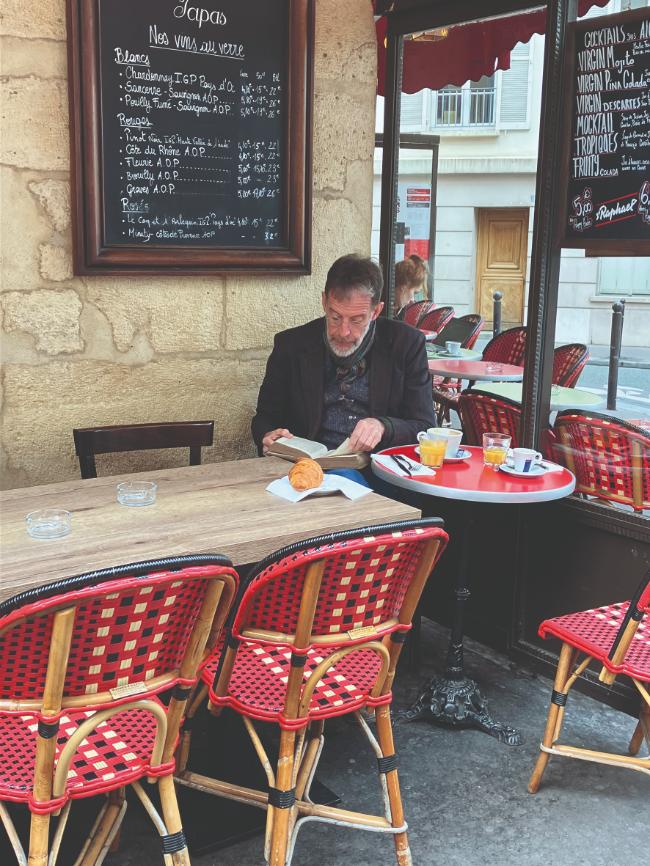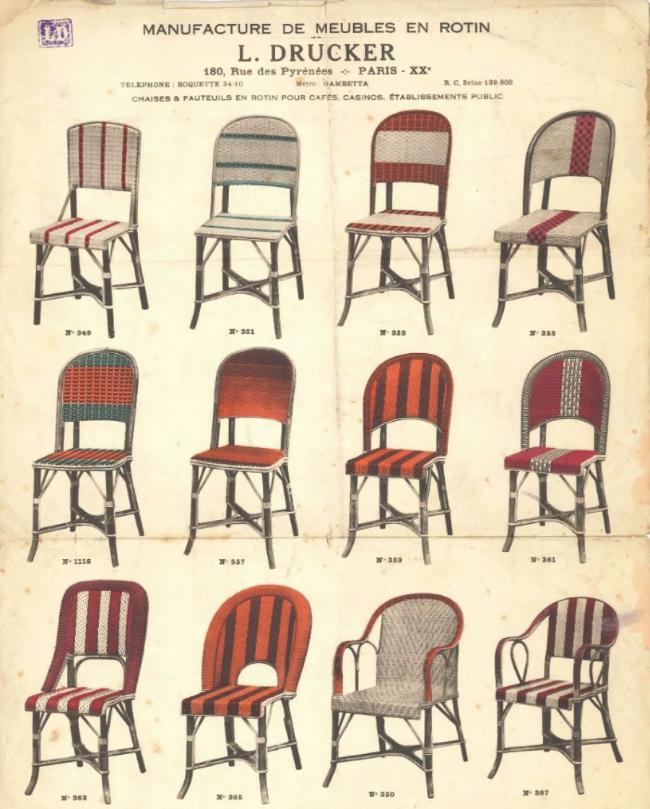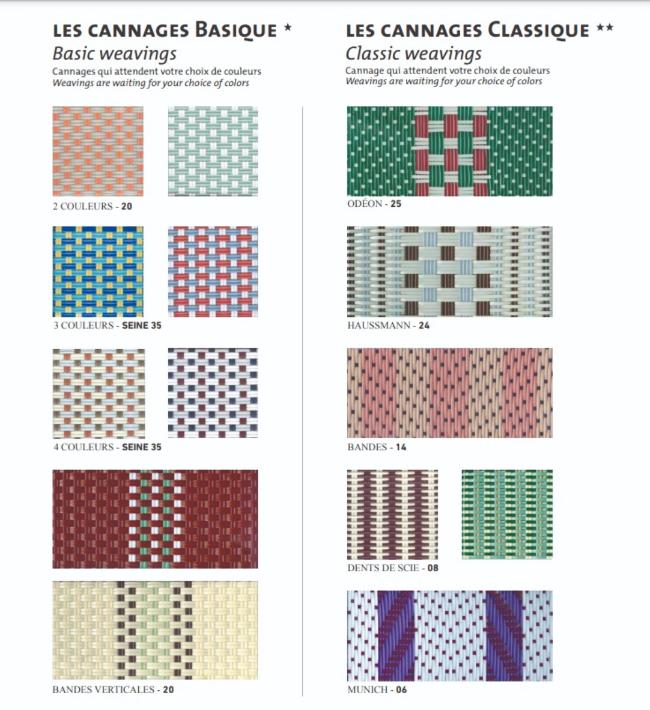Did You Know? The History of Paris’ Bistro Chairs


The iconic and unmstakeable bistro chairs dotting the pavements of Paris are all made by hand by only three manufacturers.
If you stop to while away an hour or two in a Parisian café, chances are that you’ll be sitting on a chair made by one of France’s three major manufacturers: Maison Drucker, established in 1885; Maison Grock, 1911; and Maison Gatti, 1920. To this day, these bentwood chairs, recognisable by their simple yet elegant designs, are made by hand.
It’s thanks to Baron Haussmann that Paris can boast clean, sprawling pavements without his rehabilitation programme, there would be no pavement restaurants, the milieu of café society and the bistro chair since the Belle Epoque. And it’s an easy game of musical chairs to find whose chair is whose while café-crawling through France, as the seats come with a little maker’s plaque on the back.

© MAURICE-LOUIS BRANGER
The golden age
Polish expatriate Louis Drucker founded his company in the Oise village of Gilocourt in 1885. In 1912, Maison Drucker chaises-longues went down with the Titanic the company today still – makes an armchair named after the ill-fated ship. In 1919, when the rattan industry was at its peak, Drucker launched its first catalogue and before long was producing the majority of rattan furniture on the market. With factories in Flavignac and Meaux, Grock has diversified by also manufacturing terrace tables and gas patio heaters.
Meanwhile Maison Gatti, founded just over 100 years ago when Italian furniture maker Joseph Gatti arrived in France with a dream to create a family business of dedicated artisans, is located in Villemer, Seine-et-Marne.
All three houses hand-make their bistro chairs to strict standards. Grock is a Fabriqué en France company, and Drucker and Gatti are both Entreprises du patrimoine vivant (living heritage companies), an honour bestowed by the French government in recognition of their historical expertise. It takes five years to train staff to the standard required and with such a narrow pool of personnel, turnover is low, and disruptions can upset the chain of knowledge wrought a century ago. In 2013, Maison Gatti had to rebuild after its factory was destroyed by fire, and all three companies have suffered in. the 21st century, thanks to difficult economic conditions and increasing competition from cheap alternatives.

© WIKIMEDIA COMMONS
World-renowned
But quality lives on. After artisans assemble the chairs from thick lengths of rattan, which are gently heated and bent into a classic shape, expert cane workers weave the chairs’ jacquard-like patterns. Their catalogues contain cheery chequerboards of colours and patterns. The result? ‘Cane-spotting’ on Paris patios, where dozens of chair designs are mixed with myriad colour combos! The natural rattan traditionally used for the fine basketry has been largely replaced by Rilsan, a hardy, environmentally-friendly synthetic fibre which allows the chairs to better endure France’s changeable weather.
The world craves French bistro style and it’s little surprise that these 100% made-in-France chairs have an international presence. The iconic chairs made by Drucker, Grock and Gatti sit proudly on Parisian terraces and in restaurants around the globe.
From France Today Magazine

© WIKIMEDIA COMMONS
Lead photo credit : © WIKIMEDIA COMMONS
Share to: Facebook Twitter LinkedIn Email
More in French bistro, French culture, French history, Paris, Paris café
By Hazel Smith
Leave a reply
Your email address will not be published. Required fields are marked *



